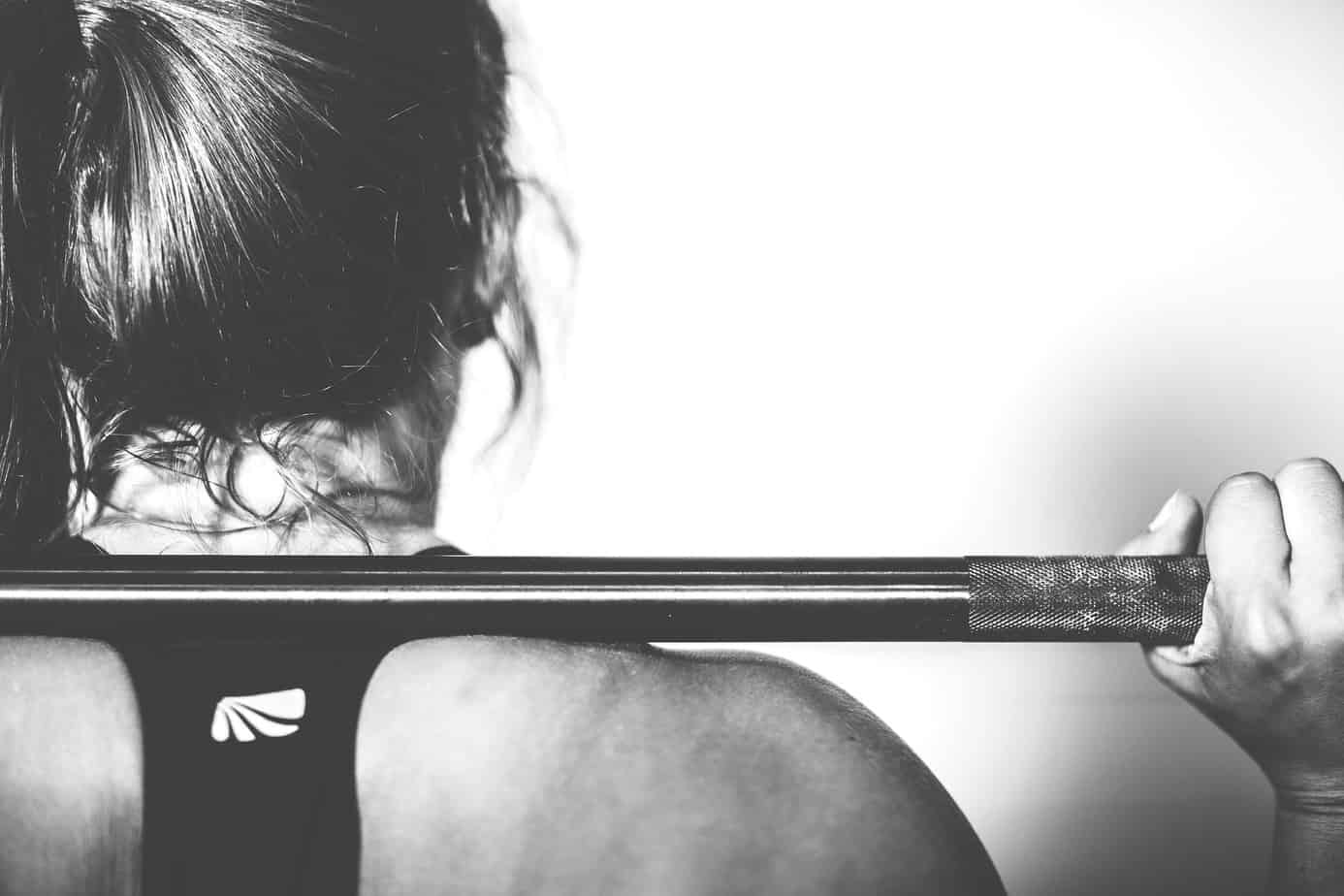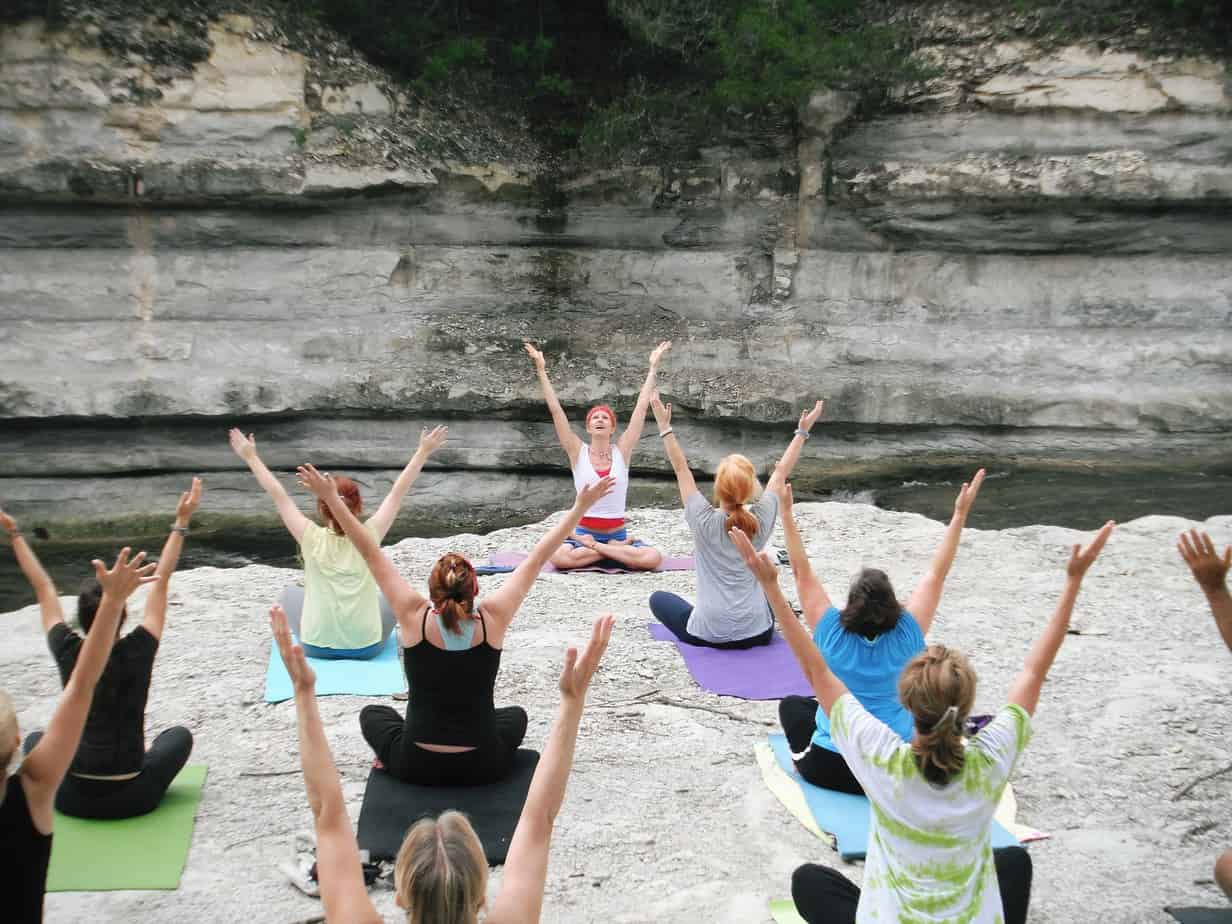Can we talk? I am not aging well, and by well, I mean I have a hard time accepting how getting older is affecting my body. Judging by all the ads on TV for Botox, body “sculpting,” and drugs to boost bone density, I can see that am not alone in my struggle to stay fit and fabulous after 50.
I’m always on the hunt for ways to preserve my health, and that’s exactly what I found in talking with my friend Christine Rosenbloom, PhD, RD, co-author of Food and Fitness After 50: Eat Well, Move Well, Be Well. I may not like what’s happening to me as the years pass, but I’m not going down without a fight, either. Take that, Mother Nature!
I scoured Chris’ book for tips, but I still had some questions. Here’s what Chris told me when I quizzed her.
Q. Maybe it’s me, but it’s tough to fight flab with age because it can seem like you’re doing a lot to control your weight with little reward. What is “weight creep,” why does it happen, and what can we do about it?
A. Weight creep is that insidious, small weight gain that doesn’t seem like a big deal. And, a pound or two at a time isn’t a big deal until 20 years later when you’re saddled with an additional 20, 30 or 40 pounds.
Nobody gains 20 pounds overnight; it’s a small, steady increase until one day it hits you that you’re much heavier than you were. I think it happens because we just don’t pay attention. We don’t monitor our weight or pay attention to how our clothes fit. You might get weighed at the doctor’s office (how many of us say, “that scale is way off?”), but rarely does a doctor say anything about weight once we step off the scale.
The rise of Athleisure wear is bad news for aging women. I only wear yoga pants when I do yoga and I wear jeans when working at home, so I have some feedback from the pants that tell me how they fit. While I recommend aiming for health, and not a number on the scale, it may be helpful to weigh yourself often, and possibly daily, to get a sense of an upward trend in your body weight. Don’t worry about fluctuating a couple of pounds every day, because that’s usually just water weight. If there is an uptick in weight overall, ask yourself what you might be doing to cause the numbers to go up. (Note: If you’ve struggled with disordered eating in the past, it may not be a good idea to weigh yourself daily.)
Should you weigh yourself every day?

Building and preserving muscle helps you stay strong in your later years. Start now to reap the benefits.
Q. It’s so important for people to understand the importance of muscle as it relates to strength, metabolism, and overall health. Can you describe what happens to muscle tissue as we age?
A. Between the ages of 20 and 90, it’s possible to lose more than 50% of our muscle mass due to sarcopenia (literally meaning “vanishing flesh”) that’s the result of a sedentary lifestyle. And, for women, the effect is even greater, as we have less muscle mass by nature. Add an illness or injury and the picture gets worse; you can lose 1% muscle mass each day after surgery or during an illness!
We lose not only muscle mass, but also muscle strength as we age and that can lead to a decrease in functional fitness, that is, the ability to continue to do the things that help us live independently. Climbing stairs, shopping and carrying groceries, cleaning the house, working in the garden…all of things we take for granted when we are younger can get harder if we lose a significant amount of muscle mass and strength.
The good news is that muscle is very responsive and adaptive to strength training, and we can regain mass and strength by doing progressive, resistance exercise twice a week. You don’t even have to go to the gym. Resistance exercise can be done at home with hand weights or exercise bands. Bob and I like Fitness Blender for online app-based fitness programs, and Go4Life from the National Institute for Aging for easy, free exercise programs.
Q. Would you explain how menopause influences body weight, muscle mass, bones, and the heart?
A. After menopause, the gradual loss of estrogen affects a woman’s health in many ways, and none of them are positive. Body composition can change, and you may have more visceral fat (the dreaded “belly fat”), an increase in the fat content in muscle, and in your heart and liver, and an overall increase in body weight until about age 70.
Muscle mass is affected, as mentioned before, but most the changes in muscle are related to lack of physical activity that builds and maintains muscle by stressing it. Bone loss begins at about age 30, but after menopause there is a rapid decline in bone mass for the first five years. The loss of bone levels off after that, but bone density is not as good as before menopause. Dietitians stress the importance of a healthy eating plan, including calcium and vitamin D, during adolescence, a prime bone-building time of life, right up to menopause (and afterwards) so that you have the strongest bones possible before calcium losses occur.
“Instead of looking for a superfood, magic supplements, or prescription drug, start eating right and moving more today, because it is never too late!”
The heart is also affected by reduced estrogen levels. Before menopause, women tend to have more “good” cholesterol in their bloodstream, and are considered at a lower risk for heart disease than men. That estrogen protection starts to wane with menopause. But, as dire as it sounds, women can now live almost half of their lives after menopause, and exercise, both aerobic and strength training, help promote a healthy body weight, bone health, heart health, and muscle health.
Q. Starting an exercise program, increasing exercise frequency, and changing the type of exercise you do can be daunting. What is your advice to help us stay fit and fabulous after 50?
A. There is no “best” exercise. Find something you like to do, start slow, and just do it. In my community, I’ve seen older adults go crazy for pickleball, and people who haven’t exercised in 20 years are showing up to play this fun sport. It might also be helpful to join a YMCA or a gym that caters to older adults; many people get free or reduced YMCA membership with their Medicare supplemental insurance but never take advantage of it. And, if that doesn’t work, find a friend or a fitness buddy to walk with.
Q. How important is maintaining strength and agility as we age with regards to independence and quality of life?
I can’t say it enough: Keeping our muscles strong, and staying flexible and agile can help prevent falls, fractures, and metabolic diseases (like diabetes). My goals include traveling, and being able to lift my suitcase to get it into the overhead bin on a plane! I also plan to be able to haul a 50-pound bag of dog food into my shopping cart, my car, and into the house to feed my two big dogs! Those tasks define functional fitness for me in my late 60s! I am also realistic and I know things can happen to my body. When an injury or illness comes along, chances are, you will recover faster and easier if you are fit!

Yogurt is a convenient, versatile, protein-packed food, and it also promotes a healthy digestive system and strong bones to help you stay fit and fabulous after 50.
Q. Protein is getting a lot of attention these days. Should older people eat more protein than the current suggested intake?
A. Researchers have identified something called “age-related anabolic resistance,” thought to be caused by less sensitive signaling pathways that lead to a slower muscle-making ability. So, older adults who are strength training need more protein than the current recommendation, and protein should be distributed throughout the day to maintain or build muscle.
While protein needs vary, I think an easy way to look at it is to recommend about 30 grams of protein per meal (a smaller person might need less 20-25, and a larger person trying to build muscle might need more, 30-40 grams) every day. I would also suggest a nighttime snack with protein, such as a half-cup of cottage cheese, two one-ounce string cheeses, or a small bowl of cereal and milk to “feed” your muscles while sleeping.







Yes!! Muscle is so much more than just appearance. It has so much to do with your health and metabolism as you age. i love this.
This is such an important article. Many of us regard exercise as something we do just to look good but you do a wonderful job laying out all the benefits as we advance in age. Everyone needs to know about this! Again, great article! We all want a good quality of life and I think exercise is what’s going to keep us happy and healthy.
You probably shouldn’t wait until you’re 50 to think about being over 50!
Great tips! I often think about how I need to stay active, even though I’m not anywhere close to 50, it’s best to start good habits now!
Developing good habits now makes life easier later!
This is such great info! I’m in my late 30’s and already noticing changes in how my body responds to diet and exercise. It’s a constant learning curve to maintain optimum health!
I hear you! There has to be recalibration every few years or there will surely be trouble!
You’re certainly not alone in worrying about this. It’s a thought-provoking post. I am trying to get back into shape right now. Harder when older! It hasn’t been easy, but I have been following a simple training program and have been very strict on myself so far. This post is a great motivation to keep pushing forward.
Motivation is the key, isn’t it? I try to take it one day at a time, and it seems to help me to work out more often. Keep up the good work and thanks for the comment!